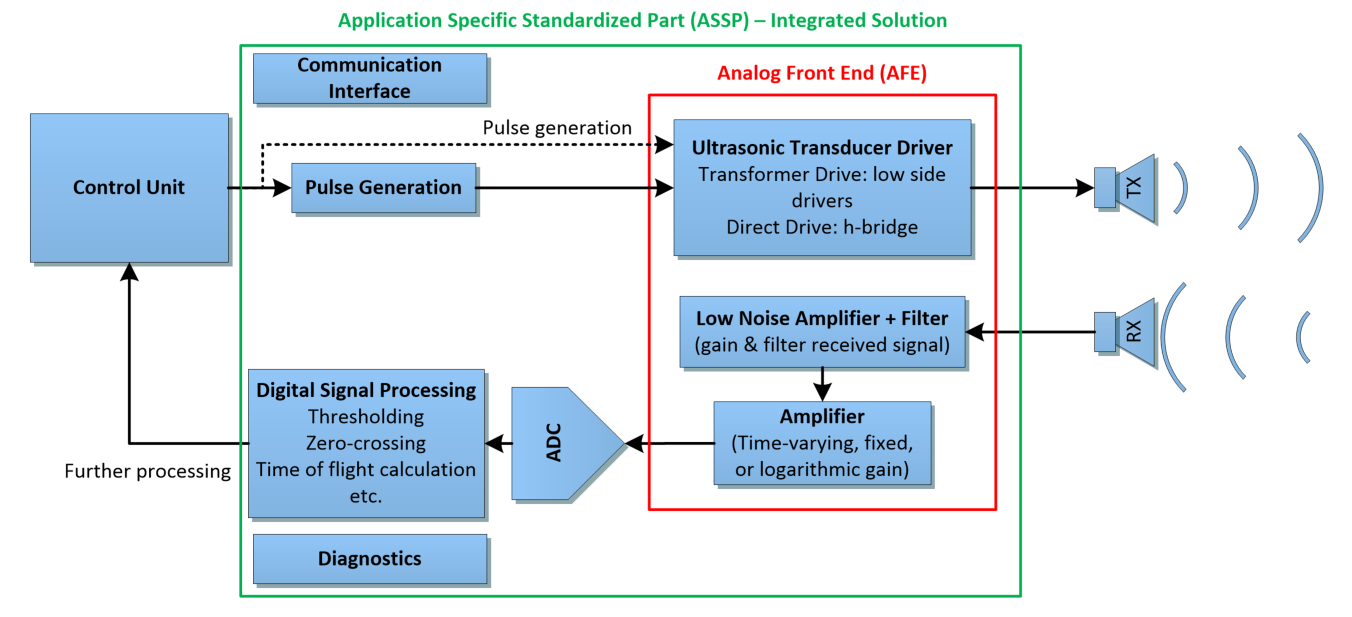SLAA907D September 2019 – December 2021 PGA450-Q1 , PGA460 , PGA460-Q1 , TDC1000 , TDC1000-Q1 , TDC1011 , TDC1011-Q1 , TUSS4440 , TUSS4470
2.1 Introduction to the Ultrasonic System
 Figure 2-1 Ultrasonic System Level Block Diagram
Figure 2-1 Ultrasonic System Level Block DiagramUltrasonic systems can:
- Be fully discrete (composed of amplifiers, filters, diodes, and other passive components)
- Be an integrated AFE
- Be an Application Specific Standardized Part (ASSP) with some signal processing capabilities on chip
- Be fully integrated with an MCU on-chip
Note that transducer selection is a key factor in the overall performance of the ultrasonic module. The rest of this section discusses how to choose a transducer based on its type, topology, and frequency, as well as what optimization techniques can be used to achieve better performance.
For TI's list of recommended transducers compatible with TI ultrasonic devices, download the PGA460 Transformer and Transducer Listings zip file.